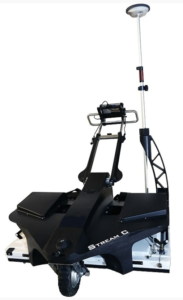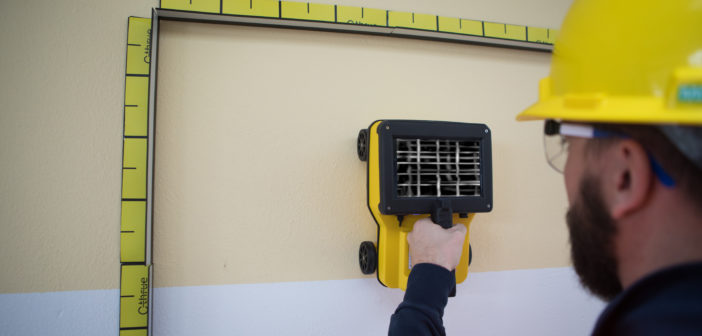As I mentioned in my previous post, this series of content is a bit more technical, as there are no ways around I need to go in detail in the technology to explain the kit. The last time, I talked about the dual-frequency antenna, the Leica DS2000. Additionally, I introduced you to the IDS C-thrue, Hexagon’s handheld GPR and IDS STREAM C, the GPR array system.

A C-thrue what?
For those who are not familiar with the solution, the IDS C-thrue is a handheld GPR system that can be used for non-destructive testing, concrete inspections, structural analysis, bridge deck analysis, in fact, anything, when you want to perform high-resolution shallow investigations.
The IDS C-thrue is a 2Ghz system, so is defined as high-frequency, but uniquely has two antennas with different polarisations. Yes, that’s right, it has one antenna with H-H configuration and one antenna with V-V configuration. If you remember what we said about that last time in the previous white paper, then this little gem can “see” things in the medium being investigated that are in both directions with relation to the scan line. This gives the unit the ability to “see through”. The thing about high-frequency, though, is if you want high-resolution data, the higher frequency means you will have a short operating time window.

The system uses positioning lasers and a reflective bar system to keep the scan lines parallel when recording data, for instance, this is useful when reviewing data and re-positioning yourself in the recorded grid to mark drill locations. You don’t have to use the reflective strips, you can go old-school and use paper print grids, free-style by marking grids on the floor, or you can scan in single-line mode. You can review data live on the screen. There’s a cool remote desktop mode where you use a remote tablet to view the scanning screen. The telescopic handle accessory is perfect for those hard to reach places.
The IDS C-thrue operating system allows you to customise the operating screen view, rotate the viewing screen, depending on which way you are scanning, and uses the family of control button icons that run through the entire range of GPR available through Hexagon. Hyperbola fit, depth collection options, 4-wheel encoding, are all featured to that make this a really nice system to use.
IDS Stream C
 The IDS Stream – C is a different beast altogether, and this section will be brief.
The IDS Stream – C is a different beast altogether, and this section will be brief.
This system uses 32 antennas in one array housing, it has a big footprint, and it also uses antennas with two polarisations. Of the 32 antennas, nine are horizontal (HH), 23 are vertical (VV), and are spaced close together. The consequence of this is that The Stream – C can collect and process scan data and assemble it live in a 3D format, yes live 3D mapping. It has a central frequency of 600mhz across the array, so ground conditions dependant, 2.5 metres can be achieved with excellent results. It can even be towed behind a vehicle; if that’s not your thing, then there is motor assistance depending on the model chosen. Positioning again is fully supported and the way to go to if I’m honest with lots of options. Ideally, this is a data collection tool, and all the data should be processed. If you’re moving up to this from the Leica DS2000, then the operating system is going to be very easy to use as it is similar to the uNext software you will be familiar with. Yes, there are a few things that are different, but easy enough to get along with.
Leica Geosystems Detection Campus supports training for all the GPR systems and software within the Hexagon portfolio, follow the link for more information.

Steve Davies
Global Trainer – Detection Products, Leica Geosystems part of Hexagon














